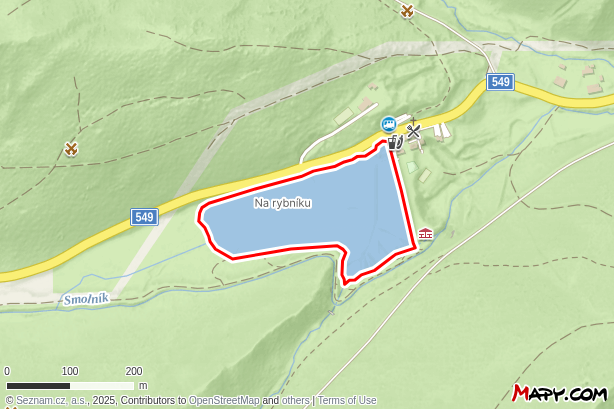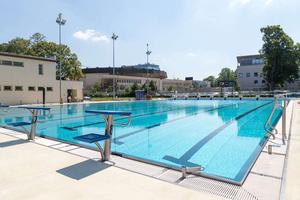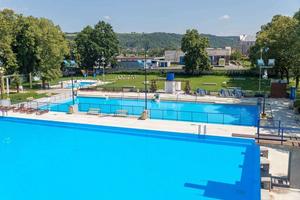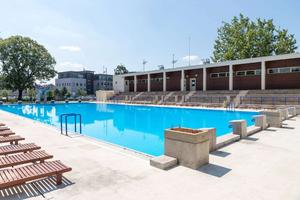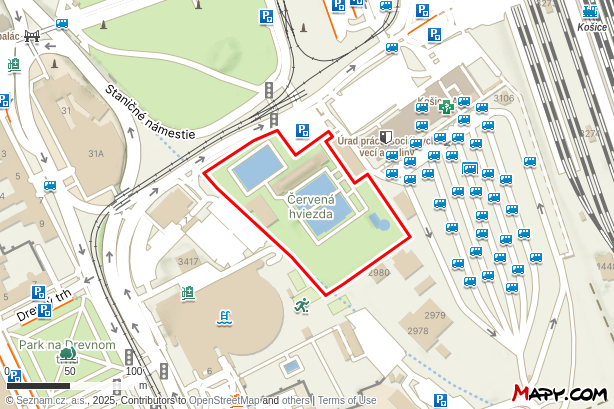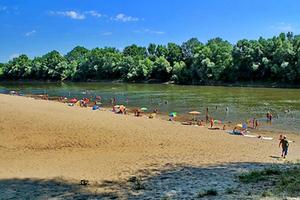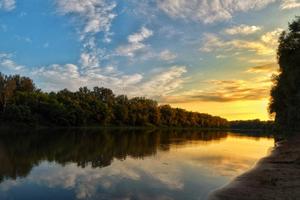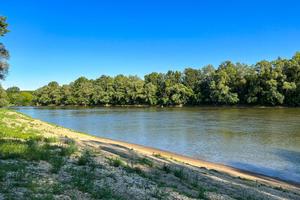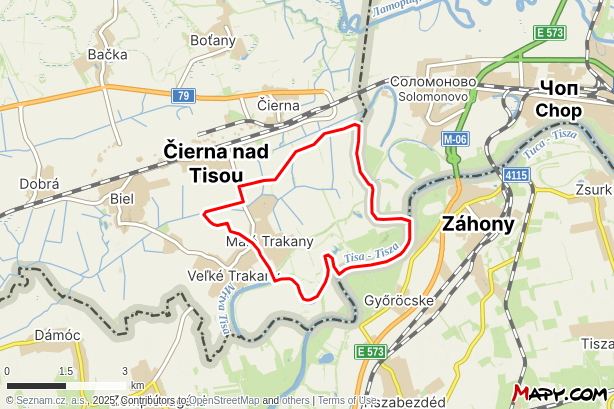The Košice Region is home to swimming spots where history meets nature, legend meets leisure, and thrill meets tranquillity. From a travertine lake with a mythical “whale” to a modernist gem in Košice, each site offers a story worth discovering.
A helping hand in the heart of Europe offers a travel guide of Slovakia.
A travertine lake hiding a prehistoric mystery
Near the village of Beňatina in the Sobrance district lies a former travertine quarry, now a turquoise lake surrounded by sheer cliffs forming a natural amphitheatre.
Swimming is not officially permitted, yet the water remains strikingly clear thanks to underground springs and contains no algae.
Its greatest curiosity is a five-metre shape on the cliff face, which locals say resembles a prehistoric creature. Some even call it the “Beňatina whale” – supposedly the fossil of a giant fish embedded in rock.
In summer, a small snack bar operates by the shore, but the star attraction is a 180-metre zipline gliding above the lake, offering panoramic views. Entry is free, though parking can be difficult at weekends. Swimming is at your own risk.
A chilly mirror in Slovenský raj
The Palcmanská Maša reservoir, near the village of Dedinky in the Rožňava District, was created in the 1920s by damming the Hnilec River.
Today it is the largest body of water in Slovenský raj (Slovak Paradise National Park), covering almost 85 hectares. Encircled by the steep Geravy cliffs, it offers dramatic views and a calm atmosphere.
Despite being among the coldest lakes in Slovakia, its clear waters attract swimmers, families, and cold-water enthusiasts. In summer, visitors can rent paddleboats and rowboats, while fishing is popular year-round. Rocky stretches line parts of the shore, but there are also family-friendly access points.
Dedinky itself offers accommodation, restaurants, and train access, making it a convenient base for hikes to Zejmarská roklina, Stratenský Canyon, Geravy, and the Dobšiná Ice Cave.
In winter, the reservoir freezes, drawing ice climbers, hardy swimmers, and even cross-country skiers.
Izra: a quiet mountain treasure in the Slanské Hills
Tucked away in the Slanské vrchy hills, Izra Lake in the Trebišov district is best reached from the village of Slanská Huta. Formed by a landslide, it sits at 434 metres above sea level and is framed by forests rich in mushrooms, blueberries, and medicinal herbs.
Later reinforced by a man-made dam, the lake spans about five hectares. A sandy beach and tranquil setting make it a popular summer retreat. Swimming is permitted but unmonitored, with depths reaching eight metres.
Local legend tells of Izra, the daughter of an Ottoman vizier, who drowned here with her lover after being struck by an arrow.
The area also holds around 20 military bunkers from the First Czechoslovak Republic, hidden along hiking trails. Nearby facilities include camping, cabins, and a snack bar. The Alžbeta cycling route connects Izra to Prešov via the Dargov Pass.
Smolník tajch: a lake born of mining tradition
Úhorná reservoir – often called the Smolník tajch – is one of eastern Slovakia’s oldest waterworks. Built in 1768, it collected rainwater for mining operations and protected the valley from floods.
The dam extends 190 metres, with depths reaching 13 metres. Today, anglers frequent the lake, which shelters carp, pike, and trout. A wooden sauna stands on its shore, while kayaks and rowboats can be hired at a nearby boathouse.
The rusty tint of the water comes from seepage in old mine shafts, though locals believe its high mineral content benefits the skin.
A legend recalls a Celtic warrior whose arrows changed colour upon striking the water, revealing its hidden properties.
Close by is the Chapel of Our Lady of the Snows, a pilgrimage site. The village of Smolník itself boasts a rich history, once hosting a royal mint, casino, and mining academy in the 18th century.
Čehačko: a national monument in swimming trunks
Košice’s Červená hviezda (Red Star) swimming pool, known fondly as Čehačko, is more than a pool – it is a protected national cultural monument. Built in the 1930s, it represents functionalist architecture with its clean lines and geometric shapes.
After years of decline, the complex underwent major renovation in 2015. Its original pools for swimmers, children, and beginners were preserved and complemented by a modern stainless-steel water polo pool meeting international standards. The facilities now include heated water, a chemical treatment plant, and a mobile spectator stand.
Yet Čehačko retains its historic charm. Bathers swim within walls approaching a century old. Though in an urban setting, it remains a rare blend of sport, relaxation, and nostalgia – soon to be further revitalised and linked with the National Olympic Centre for Aquatic Sports.
The golden sands of the Tisa River
In southeastern Slovakia, near the Hungarian border, the Tisa River has sculpted a sandy beach by the village of Malé Trakany – once a popular summer spot in the 1990s.
Today, it is used mostly by locals. There are no formal facilities, but the river is warm and shallow enough for families and children. Access is free; visitors find only sand, water, and greenery.
The Tisa nurtures a rich wetland ecosystem of floodplain forests and riverbank vegetation. The beach is also a symbolic meeting point of three nations – Slovakia, Hungary, and Ukraine.
©Korzár
Spectacular Slovakia travel guides
A helping hand in the heart of Europe thanks to our Slovakia travel guide, with more than 1,000 photos and hundreds of tourist spots.
Our detailed travel guide to the Tatras introduces you to the whole region around the Tatra mountains, including attractions on the Polish side.
Lost in Bratislava? That's impossible with our City Guide!
See some selected travel articles, podcasts, traveller info as well as other guides dedicated to Nitra, Trenčín Region, Trnava Region and Žilina Region.

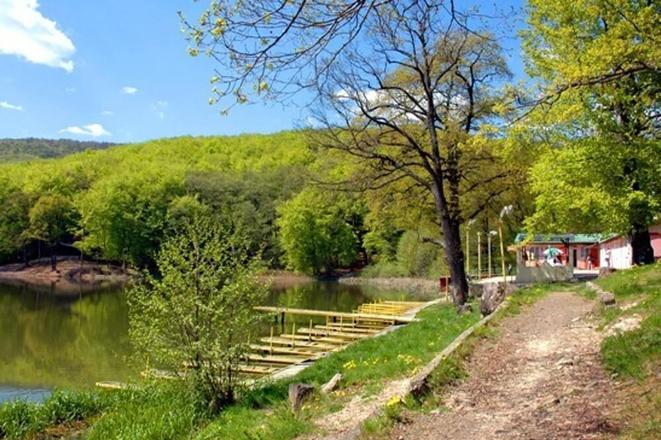 Izra (source: Košice Region)
Izra (source: Košice Region)
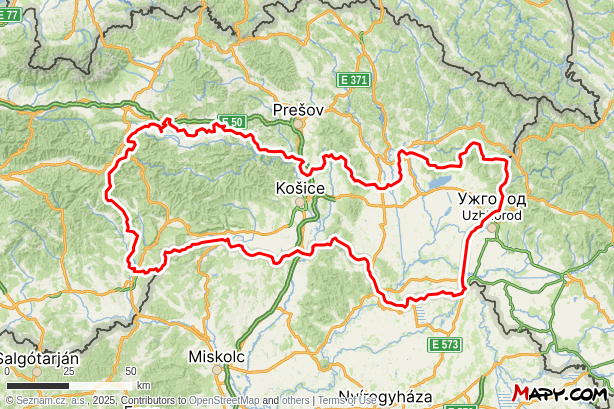
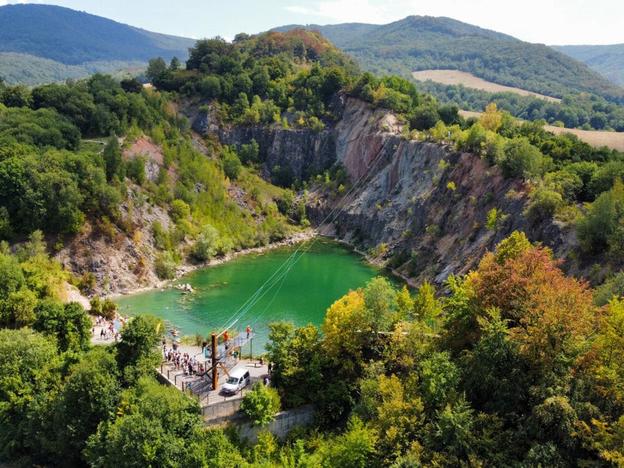 A 180-metre zipline gliding above the lake (source: Košice Region)
A 180-metre zipline gliding above the lake (source: Košice Region)
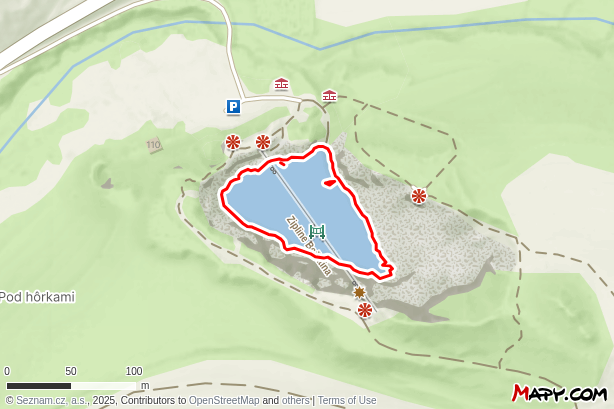
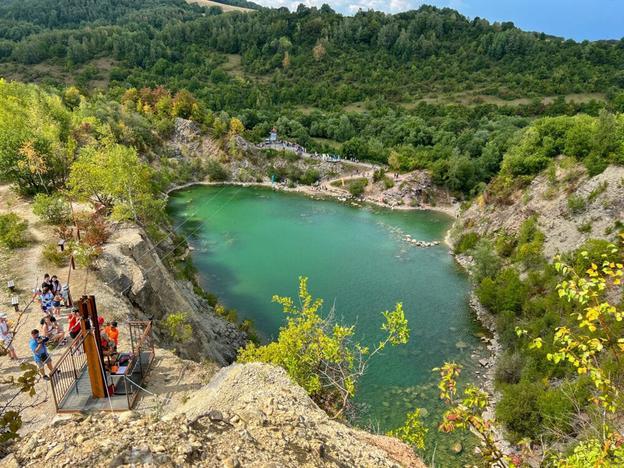 A former travertine quarry in the Sobrance district, eastern Slovakia (source: Košice Region)
A former travertine quarry in the Sobrance district, eastern Slovakia (source: Košice Region)
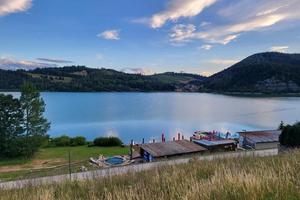
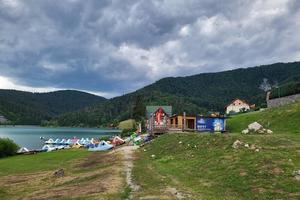
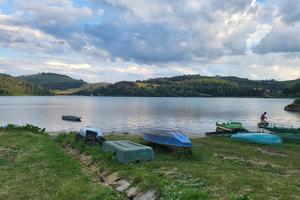
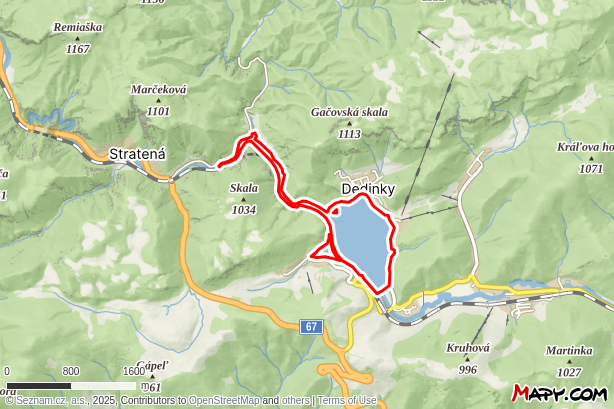

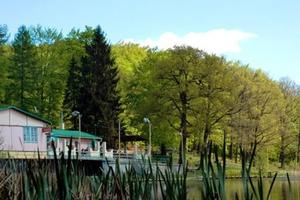
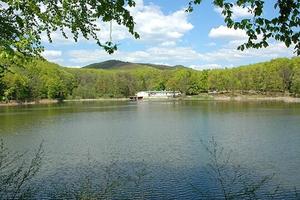
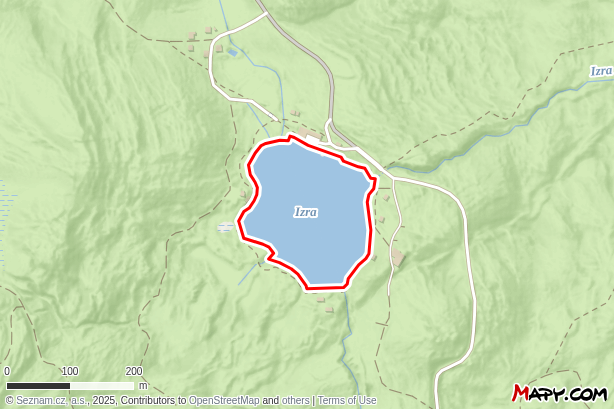
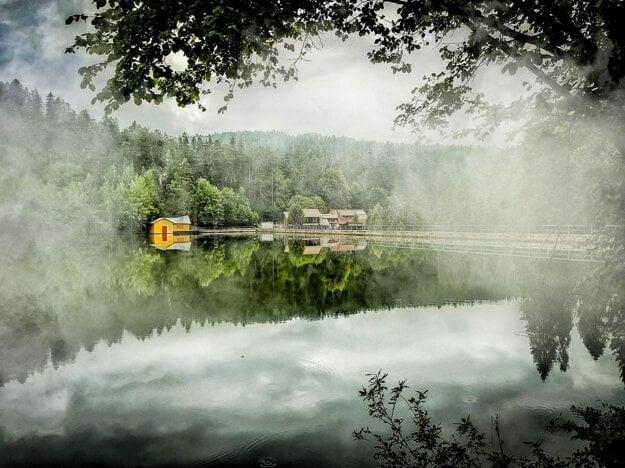 Úhorná (source: Košice Region)
Úhorná (source: Košice Region)
